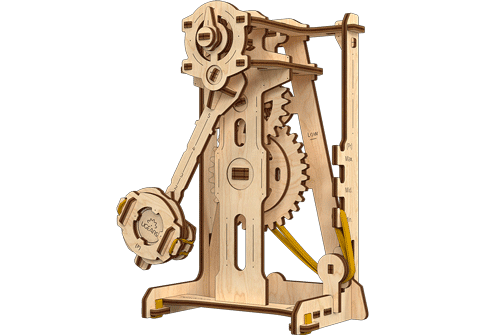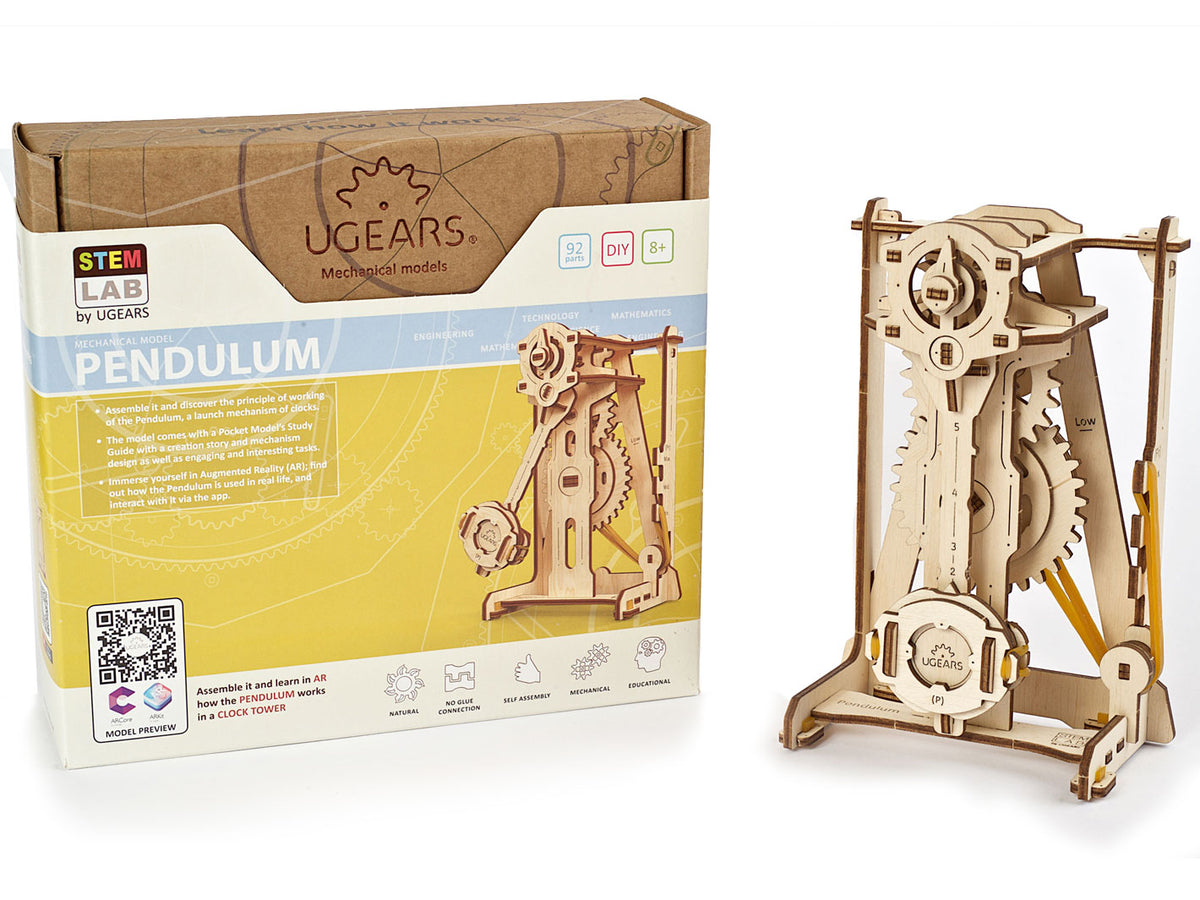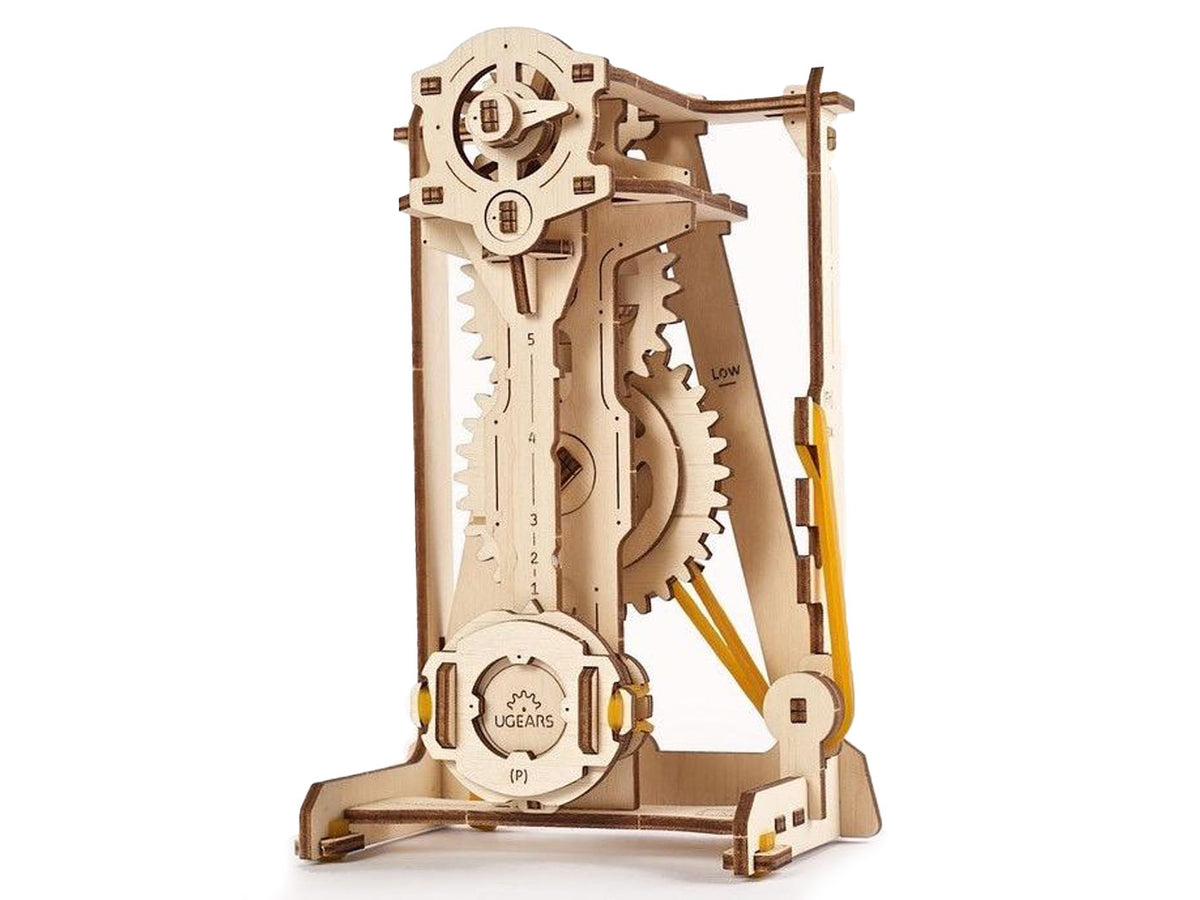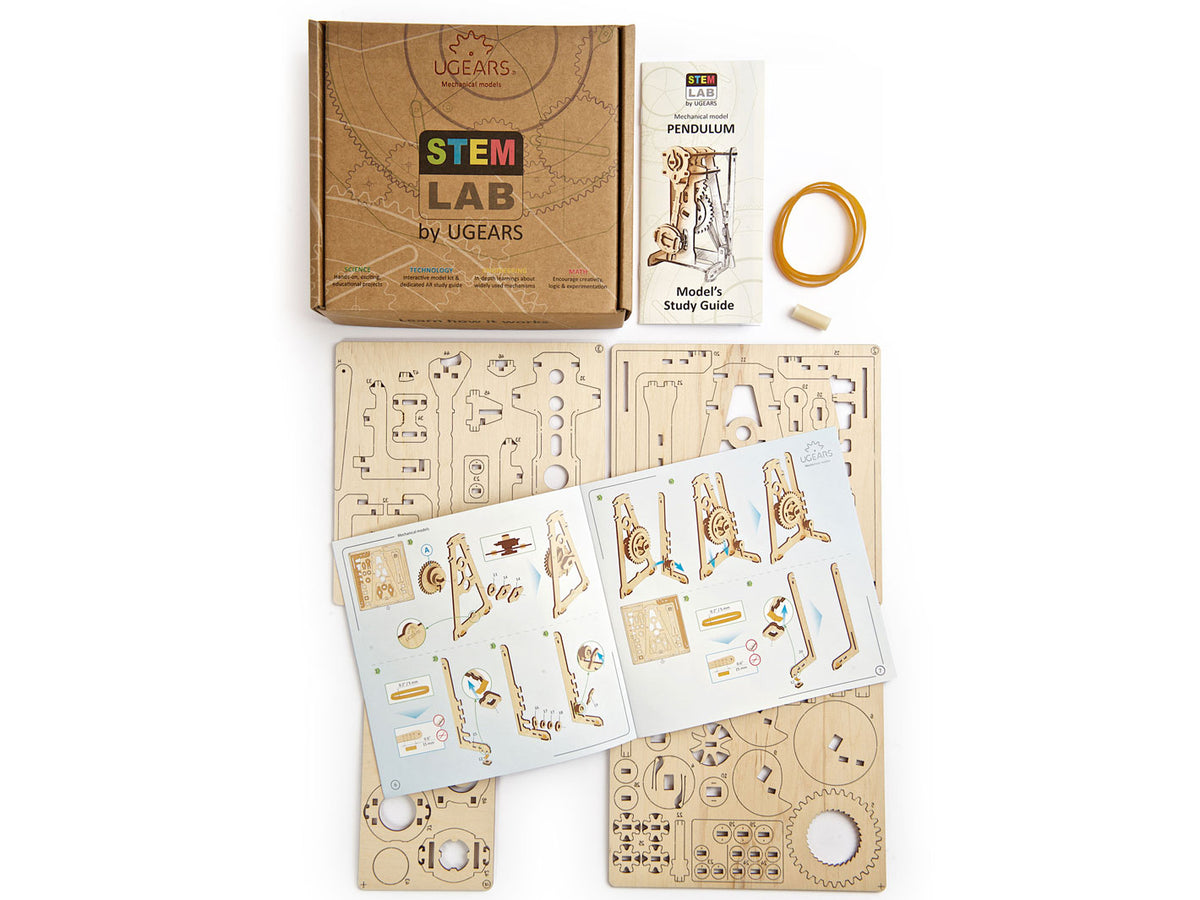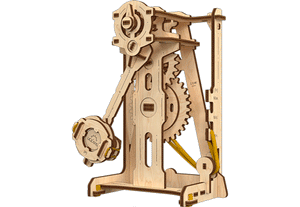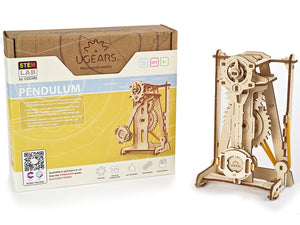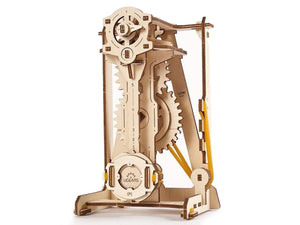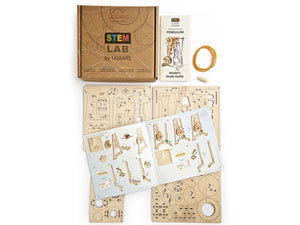- Ages 8+
- Model size: 11.5 x 8.3 x 16.7 cm
- Number of components: 92
- Estimated time for assembly: 1-2 hours
STEM lab Model kits come with all you need in a box.
- High-quality wooden boards with pre-cut details and other standard supplies. Assembly requires no glue or additional tools. The details come out of the boards with a slight push.
- Detailed step-by-step colour instruction manual. Easy to follow – easy to learn.
- Examples and suggestions for your fun hands-on projects.
- QR-code to Pocket Model’s Study Guide (the Pendulum Essentials with a description of the mechanism, principle of working, main characteristics, definitions, and formulas).
- QR-code to Ugears AR Application. New exciting features from Ugears to make your learning experience even more fascinating!
- Model size: 11.5 x 8.3 x 16.7 cm
- Number of components: 92
- Estimated time for assembly: 1-2 hours
STEM lab Model kits come with all you need in a box.
- High-quality wooden boards with pre-cut details and other standard supplies. Assembly requires no glue or additional tools. The details come out of the boards with a slight push.
- Detailed step-by-step colour instruction manual. Easy to follow – easy to learn.
- Examples and suggestions for your fun hands-on projects.
- QR-code to Pocket Model’s Study Guide (the Pendulum Essentials with a description of the mechanism, principle of working, main characteristics, definitions, and formulas).
- QR-code to Ugears AR Application. New exciting features from Ugears to make your learning experience even more fascinating!

